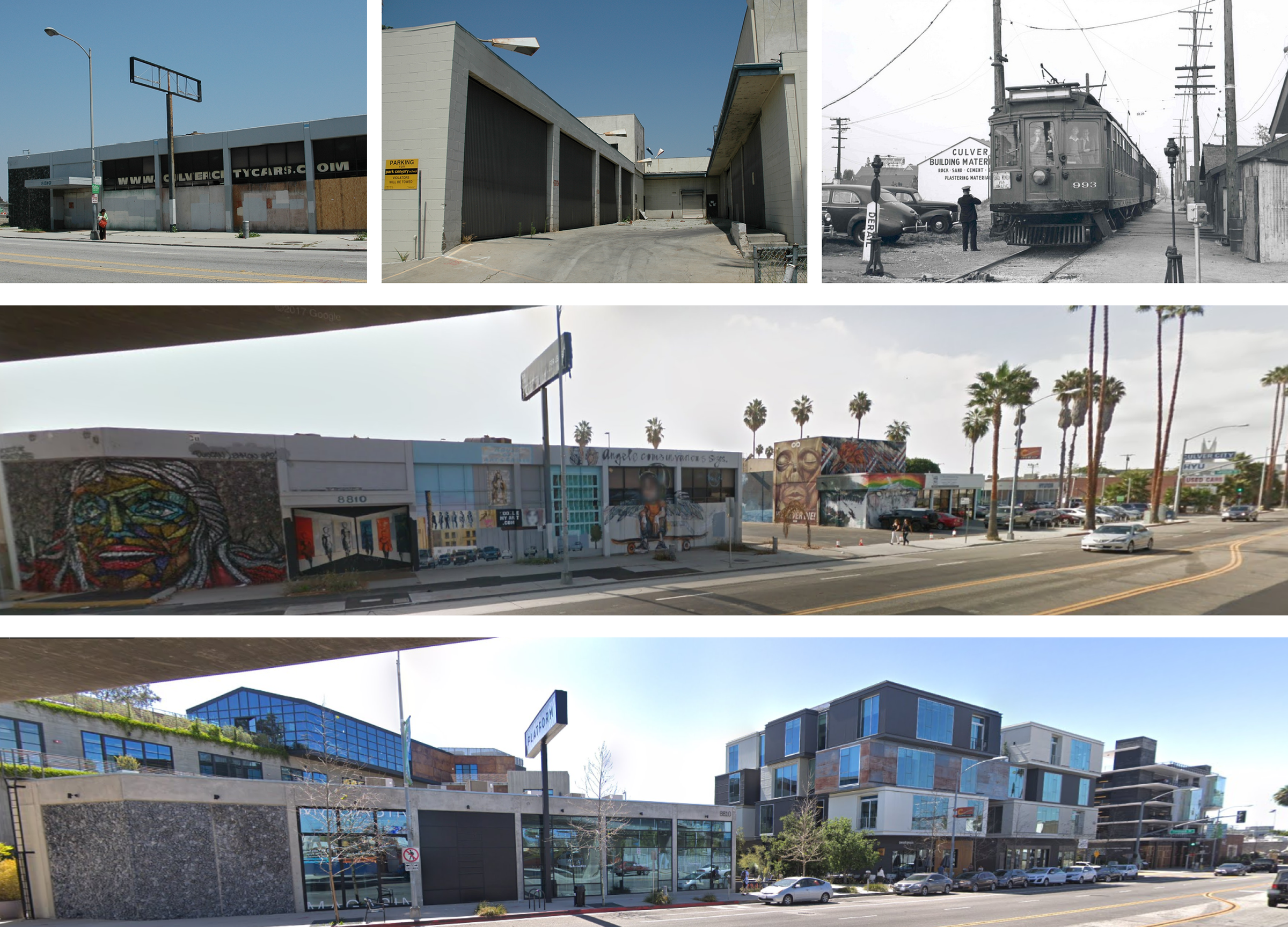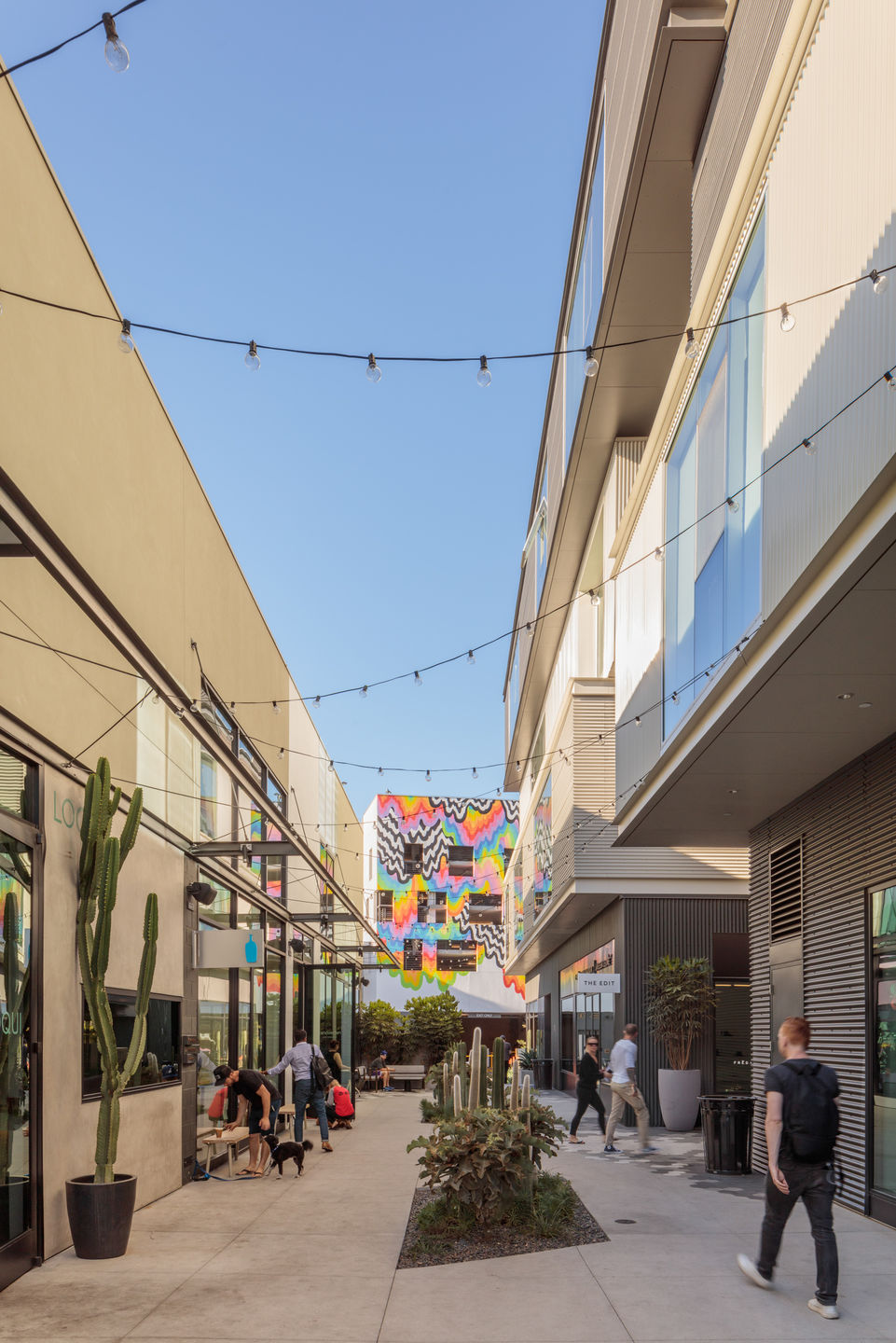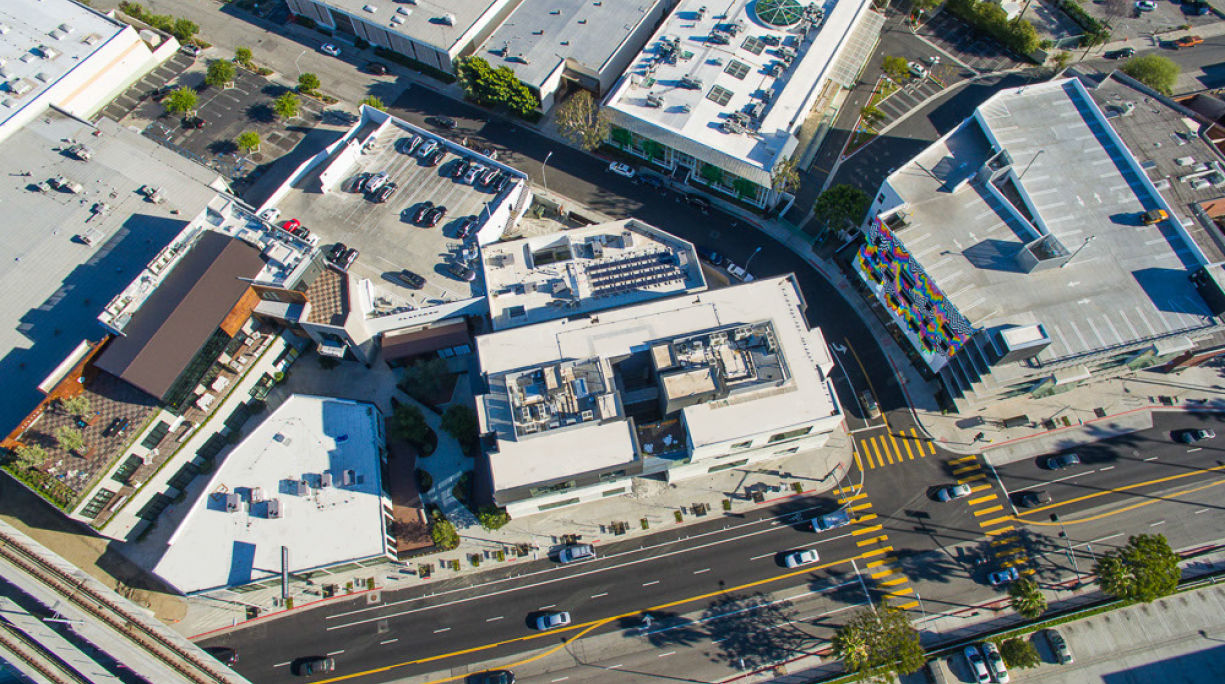Abandoned and blighted, a shuttered used-car dealership sat dormant on a forgetten semi-industrial parcel adjacent to Culver City’s edgy Hayden Tract. The site’s colourful history dates back even further, to the 1900’s, when it served as a major railroad station and freight yard. Rather than turn its back on the past, the design and retail hub celebrates the city precinct’s recent past in all its sometimes gritty charm. Sparking a Revival.
Sparking a Revival.
Once considered an “unpolished gem” by the development team and architects, the reimagined site is now a convergence of fashion, art, and culinary talent. The Platform complex spans across six buildings and features a central courtyard along with other garden nooks interspersed throughout. It’s one of a kind architectural setting is a resurrection of prior operations, celebrating it’s uniqueness through various architectural diversities while holding true to a definitive overall vision.
It’s one of a kind architectural setting is a resurrection of prior operations, celebrating it’s uniqueness through various architectural diversities while holding true to a definitive overall vision. Juxtaposing new with Repurposed.
Juxtaposing new with Repurposed.
The Boxcar - In the early 1900s, the site served as a railroad station frequented by freight trains. After it’s closing, the lot became a junk yard littered with abandoned boxcars. Inspired by this piece of history, the designers envisioned the Boxcar building as an homage to the stacked and scattered freight cars. The iconic Boxcar building welcomes guests, tenants, and community members to this dynamic new neighborhood. Two of the complex’s signature restaurants are housed within its ground floor while three creative lofts, above, are now home to leaders in entertainment, media, health, and fashion.
The iconic Boxcar building welcomes guests, tenants, and community members to this dynamic new neighborhood. Two of the complex’s signature restaurants are housed within its ground floor while three creative lofts, above, are now home to leaders in entertainment, media, health, and fashion. Washington Arts - Existing street art, which adorned the vacant site, inspired the bold graffiti art style of the Washington Arts building. The mural-clad structure houses an upscale restaurant, artists lofts, and parking. The artwork breaks up the parking facility’s massing while providing a place-specific focal point.
Washington Arts - Existing street art, which adorned the vacant site, inspired the bold graffiti art style of the Washington Arts building. The mural-clad structure houses an upscale restaurant, artists lofts, and parking. The artwork breaks up the parking facility’s massing while providing a place-specific focal point. Landmark Repair Shop - Designer shops and renown chefs are tucked thoughtfully behind the Boxcar building in the more human-scaled Landmark Repair Shop. Recalling the structure’s past life, the last vestiges of repurposed automotive bays are juxtaposed with modern appointments, introducing glass storefronts where roll-up garage doors once existed.
Landmark Repair Shop - Designer shops and renown chefs are tucked thoughtfully behind the Boxcar building in the more human-scaled Landmark Repair Shop. Recalling the structure’s past life, the last vestiges of repurposed automotive bays are juxtaposed with modern appointments, introducing glass storefronts where roll-up garage doors once existed. The Bunker - An existing building, previously utililzed as parking and storage for the defunct car dealership, is reintroduced to accomodate retail and additional parking. The new single-story steel storefront structure creates architectural cohesiveness between the Bunker and its neighboring buildings.
The Bunker - An existing building, previously utililzed as parking and storage for the defunct car dealership, is reintroduced to accomodate retail and additional parking. The new single-story steel storefront structure creates architectural cohesiveness between the Bunker and its neighboring buildings. The Greenhouse - Traveling back towards the highly-trafficked street frontage, the elevated Greenhouse guides visitors into a grander community-scale. Explorations into the abandoned freight train lot provoked the design team who studied reference images of industrial remnants covered by the unbridled growth of wild grasses and flowers. Since opening, the Greenhouse has attracted an upscale rooftop dining tenant.
The Greenhouse - Traveling back towards the highly-trafficked street frontage, the elevated Greenhouse guides visitors into a grander community-scale. Explorations into the abandoned freight train lot provoked the design team who studied reference images of industrial remnants covered by the unbridled growth of wild grasses and flowers. Since opening, the Greenhouse has attracted an upscale rooftop dining tenant. The Showroom - The sixth and final space that defines the Platform is the Showroom. Repurposing the existing automotive showroom into an ideal storefront ultimately attracted an “eco-chic” clothing line to the location. The original car dealer sign pole and frame are incorporated into the design.
The Showroom - The sixth and final space that defines the Platform is the Showroom. Repurposing the existing automotive showroom into an ideal storefront ultimately attracted an “eco-chic” clothing line to the location. The original car dealer sign pole and frame are incorporated into the design.
















































